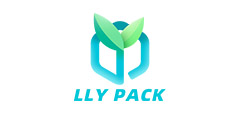Corrugated board In the various industries hit by the economic recession in Western Europe, corrugated paperboard has suffered the most, and the decline in output caused by the economic downturn has caused inventory to decline. In the second half of 2001, due to lack of demand, the prices dropped significantly. At the same time, because most customers estimate that there is room for price reduction in the price of cardboard, they have been reluctant to open positions. We estimate that customers' inventories will continue to decline in 2002. As a result, shipments of corrugated cardboard will not increase during 2001-2002. This is the worst performance of this sector in the past 10 years. Corrugated cardboard encounters triggered a chain reaction of boxboard. In 2001, the consumption of boxboard may have decreased by 4% year-on-year. In 2002, driven by the economic recovery and the establishment of customer positions, the demand for boxboard may increase. By 2003, we forecast that the Western European Economic Association will start a strong rebound, which will drive demand for the entire paper board industry to rise, with an increase of around 4%.
Manufacturers in Western Europe tried to deal with too low demand by stopping production. Although the downward trend in prices has been temporarily controlled, we believe that in 2002, due to lack of demand and higher costs, the price of paperboard will continue to fall. Since the end of 2000, the operating rate of the paperboard industry has been low. We believe that the operating rate will remain at about 88% before 2003 and the average operating rate in 2000 will be 93%.
The deteriorating economic environment of boxboard has also had a severe impact on the Western boxboard market. We estimate that the consumption of recycled cardboard in 2001 decreased by 4%, while the consumption of folding cardboard decreased by 2.5%. Both manufacturers also took a stoppage action in the summer of 2001, which helped to stabilize prices. In fact, in the case of insufficient demand, the price of cardboard is still very flexible. Obviously, if the suspension of work continues, the price of the boxboard market will continue to climb until 2002. We believe that such high prices will lead to further reduction in the consumption of boxboard. Consumption in 2002 may decline by 0.5%-1% year-on-year. The pressure on the boxboard market now comes from the split of similar products to the market. At the high price of cardboard, some cheap alternatives, such as plastics, may come in. We predict that the recovery time of the container board industry may be when the economy of Western Europe as a whole recovers in 2003, when its consumption may increase by 2.5% to 3%.
In terms of production, the production of boxboard in Western Europe has remained stable. Compared with recycled boxboard, the high profitability of boxboard does not prompt manufacturers to rush to increase production capacity. In the next two years, the production of boxboard will maintain an average growth rate of 2.6% per year. So far, only Sarda has announced that it will put into use the new machine in 2002: a carton machine with an annual output of 70,000 tons. In this way, the ratio of shipments to production will not be too wide. We predict that the operating rate of the boxboard industry will remain at 90%-92% between 2001 and 2003.
EnglishEspañolPortuguêsDeutschहिंदी日本語ខ្មែរNederlandsالعربية한국어मराठीMalagasyItalianoPolskiSvenskaελληνικάPусскийภาษาไทยTürkShqipMagyarViệtSamoaМонголMaltiIndonesia FrançaisMelayuҚазақшаYorùbáবাঙালিעִברִיתGàidhligSomaliEesti keelKreyòl Ayisyennorskčeštinaفارسیతెలుగుမြန်မာBosanskiMaoriქართულიRomânăбеларускіУкраїнськаతమిళGaeilgeSuomalainenپښتوລາວհայերենSlovenščinaFilipinoO'zbekÍslenskaייִדישLatviešuGalegoFryskनेपालीKurdîCatalàбългарскиHawaiianHrvatskiਪੰਜਾਬੀWong JawaKiswahililëtzebuergeschisiXhosaEuskalSundaZuluગુજરાતીТоҷикӣ
- Casa
- Chi siamo
-
Elenco prodotti
- Linea ondulata
- Macchina ondulata >
-
Ricambi a macchina ondulata >
- Giunto rotante
- Pettine per il marcatore di scivolone
- Pastiglie dei freni
- Pompa diaframma per colla
- Stripper di carta scarica
- Chuck di espansione
- Tubo flessibile in metallo
- Mola
- Nastro per splicer
- Rullo ondulato
- Lama di taglio
- Cintura di trazione del ponte sopraelevato
- Ruota del sole
- Cintura del trasportatore
- Lama da taglio NC
- Trappola a vapore
- Cilindri pneumatici
- Freno pneumatico
- Air Bellow Spring
- Pompa a vuoto ad anello d'acqua
- Lubrificante a macchina ondulata
- Distanziatore di gomma
- Distanziatore placcato in titanio
- Flexo Stampter Slotter
- Macchina della stampante Flexo >
-
Parti di ricambio della stampante >
- piastra di rame
- PIASTRA DI STAMPARE
- Pompa Aro.
- Pennello in acciaio e ottone
- Filtro in inchiostro
- Doctor Blades.
- Copertura dell'antico
- Lama di slotting.
- Nastro in fibra
- Cornice sospesa
- PET PRESSIONE PET con film
- Cuscino di stampa r e bak
- Ruota di alimentazione
- Un modo portante
- Die board rotary.
- Pompa a diaframma singola
- Blocco finale con condotto a inchiostro
- Diaframma in gomma
- Valvola di Duckbill
- Freno della frizione magnetica
- Striscia di scanalatura sospesa
- Macchina da imballaggio >
- Macchina per cartone >
- Parti della macchina di cartone. >
- Cinture a doppia facciatura.
- Cucitura del sistema di incollaggio >
- Lama di taglio di cartone >
- Lama in acciaio di tungsteno >
- Mola
- Stripper di rifiuti
- Lama della macchina per imballaggio >
- Apparecchiatura pre-pressione >
-
Lama di taglio industriale >
- Lama da sega circolare di taglio delle piastrelle
- Lama della sega da taglio in metallo
- Lama segale da taglio in legno
- Lama segale da taglio del cibo
- Lama da taglio in fibra
- Blade di chipper
- Stampo pieghevole
- Lama per la macchina da taglio vegetale
- Lama sottile in acciaio
- Lama da stampo Tsukatani
- Lama da stampante
- Blade della macchina maschera
- Slitter Rewinder Blade
- Lama tmr
- Lama circolare del tabacco
- Roll Shear Blade
- Coltello dentellato per imballaggio
- Blade a fascia da taglio di carta
- Lame del dottore
- Lama rotonda
- Tre buche lama
- Lama ceramica
- Bastello a banda Blade per tessuto
- Bastello a banda Blade per spugna schiuma
- Bastello a banda per la scissione della macchina
- Lama del coltello a banda per carta
- Porta della lama
- Lama di taglio industriale
- Taglierina
- Smerigliatrice angolare
- Blade Shredder
- V Grooving Blade
- Forbici elettriche
- CNC Machine Blade & Tools
- Lama di trasformazione alimentare
- Notizia
- video
- Contatti
- Invia domanda










